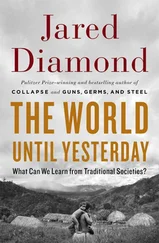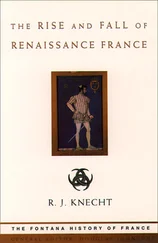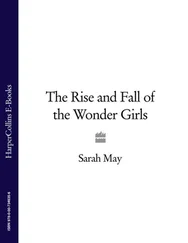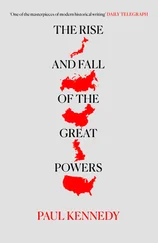Jared Diamond - The rise and fall of the third chimpanzee
Здесь есть возможность читать онлайн «Jared Diamond - The rise and fall of the third chimpanzee» весь текст электронной книги совершенно бесплатно (целиком полную версию без сокращений). В некоторых случаях можно слушать аудио, скачать через торрент в формате fb2 и присутствует краткое содержание. Год выпуска: 1991, ISBN: 1991, Издательство: RADIUS, Жанр: Биология, на английском языке. Описание произведения, (предисловие) а так же отзывы посетителей доступны на портале библиотеки ЛибКат.
- Название:The rise and fall of the third chimpanzee
- Автор:
- Издательство:RADIUS
- Жанр:
- Год:1991
- ISBN:0-09-174268-4
- Рейтинг книги:4 / 5. Голосов: 1
-
Избранное:Добавить в избранное
- Отзывы:
-
Ваша оценка:
- 80
- 1
- 2
- 3
- 4
- 5
The rise and fall of the third chimpanzee: краткое содержание, описание и аннотация
Предлагаем к чтению аннотацию, описание, краткое содержание или предисловие (зависит от того, что написал сам автор книги «The rise and fall of the third chimpanzee»). Если вы не нашли необходимую информацию о книге — напишите в комментариях, мы постараемся отыскать её.
The rise and fall of the third chimpanzee — читать онлайн бесплатно полную книгу (весь текст) целиком
Ниже представлен текст книги, разбитый по страницам. Система сохранения места последней прочитанной страницы, позволяет с удобством читать онлайн бесплатно книгу «The rise and fall of the third chimpanzee», без необходимости каждый раз заново искать на чём Вы остановились. Поставьте закладку, и сможете в любой момент перейти на страницу, на которой закончили чтение.
Интервал:
Закладка:
To test that imprinting theory of human mate choice rigorously, one would have to do experiments like shipping some Swedish babies to adoptive parents in New Guinea, or painting some Swedish parents permanently black. Then, after waiting twenty years for the babies to grow up, one could study whether they preferred Swedes or New Guineans as sex partners. Alas, once again, the Search for Truth about humans founders on practical problems, but such tests can be performed with full experimental rigour on animals. Take snow geese, for example, with their blue or white colour phases. Do white geese learn or inherit their preference in the wild for white geese over blue ones? Canadian biologists hatched gosling eggs in an incubator, then put the goslings into a nest of goose 'foster-parents'. When those goslings grew up, they chose a mate with the colour of the foster-parents. When goslings were reared in a large mixed flock of both blue and white birds, they showed no preference between blue and white prospective mates on reaching adulthood. Finally, when the biologists dyed some white parents pink, their offspring came to prefer pink-dyed geese. Thus, geese do not inherit but learn a colour preference, by imprinting on their parents (and on their siblings and playmates). How, then, do I think that people in different parts of the world evolved their differences? Our insides remained invisible to us and were moulded only by natural selection, with results such as that of tropical Africans but not Swedes evolving the anti-malarial defence of a sickle-cell haemoglobin gene. Many visible features of our outsides also got moulded by natural selection. But, just as in animals, sexual selection had a big effect in moulding the external traits by which we pick our mates.
For us humans those traits are especially the skin, eyes, hair, breasts, and genitals. In each part of the world those traits evolved in tandem with our imprinted aesthetic preferences to reach different, somewhat arbitrary results. Which particular human population ended up with any given eye or hair colour may have been partly an accident of what biologists term the 'founder effect'. That is to say, if a few individuals colonize an-empty land and their descendants then multiply to fill the land, the genes of those few founding individuals may still dominate the resulting population many generations later. Just as some birds of paradise ended up with yellow plumes and others with black plumes, so some human populations ended up with yellow hair and others with black hair, some with blue eyes and others with green eyes, some with orange nipples and others with brown nipples.
I do not mean thereby to claim that climate has nothing whatsoever to do with skin colour. I acknowledge that tropical peoples tend on the average to have darker skins than temperate-zone peoples, though there are many exceptions, and that this is probably due to natural selection, though we are unsure of the exact mechanism. Instead, I am saying that sexual selection has been strong enough to render the correlation between skin colour and sun exposure quite imperfect.
If you are still sceptical about how traits and aesthetic preferences can evolve together to different and arbitrary end points, just think about our changing fashion preferences. When I was a schoolboy in the early 1950s, women rated men with crew-cuts and clean-shaven faces a's handsome. Since then, we have seen a parade of men's fashions, including beards, long hair, earrings, purple-dyed hair, and the Mohawk hair style. A man daring to flaunt any of those fashions in the 1950s would have revolted the girls and enjoyed zero mating success. That is not because crew-cuts were better adapted to atmospheric conditions of Stalin's last years, while a purple Mohawk has higher survival value in our post-Chernobyl era. Instead, men's appearances and women's tastes changed in tandem, and the changes occurred far more rapidly than evolutionary changes in skin colour, since no gene mutations were required. Either women came to like crew-cuts because good men had them, or men adopted crew-cuts because good women liked them, or something of both happened. The same goes for women's appearances and men's tastes.
To a zoologist, the visible geographic variability that sexual selection produced in humans is impressive. I have argued in this chapter that much of our variability is a by-product of a distinctive feature of the human life-cycle, our choosiness with respect to our spouses and sex partners. I do not know of any other wild animal species in which eye colour of different populations can be green, blue, grey, brown, or black, while skin colour varies geographically from pale to black and hair is either red, yellow, brown, black, grey, or white. There may be no limits, except those imposed by evolutionary time, on the colours with which sexual selection can adorn us. If humanity survives another 20,000 years, I predict that there will be women with naturally green hair and red eyes—plus men who think such women are the sexiest.
SEVEN
WHY DO WE GROW OLD AND DIE?
We constantly invest resources in the repair of our bodies, just as we do with our cars. Unfortunately for us and for all other animals, there is a limit to the resources that natural selection found it worthwhile to programme into our self-repair. As a result, we eventually grow old and die, but at least we age more slowly than our ape relatives. 'Mother, why did Grandpa have to die? Will you die some day? Will I die too? Why?
Death and aging constitute a mystery that we often ask about as children, deny in youth, and reluctantly come to accept as adults. I scarcely reflected on aging when I was a college student. Now that I am fifty-three years old, I find it decidedly more interesting. Life expectancy among US white adults is, presently about seventy-eight years for men, eighty-three for women. But few of us will survive to 100. Why is it so easy to live to eighty, so hard to live to 100, and almost impossible to live to 120? Why do humans with access to the best medical care, and animals kept in a cage with plenty of food and no predators, inevitably grow infirm and die? It is the most obvious fact of life, but there is nothing obvious about what causes it.
In the bare fact of our aging and dying, we resemble all other animals. In the detarh, however, we have improved considerably over the course of our evolutionary history. Not a single individual of any ape species has been recorded as achieving the current life expectancy of US whites, and only exceptional apes reach their fifties. Hence we age more slowly than do our closest relatives. Some of that slowdown may have developed recently, around the time of the Great Leap Forward, since quite a few Cro-Magnons lived into their sixties while few Neanderthals passed forty.
Slow aging is crucial to the human lifestyle because the latter depends on transmitted information. As language evolved, far more information became available to us to pass on than previously. Until the invention of writing, old people acted as the repositories of that transmitted information and experience, just as they continue to do in tribal societies today. Under hunter-gatherer conditions, the knowledge possessed by even one person over the age of seventy could spell the difference between survival and starvation or defeat for a whole clan. Thus, our long lifespan was important for our rise from animal to human status.
Obviously, our ability to survive to a ripe old age depended ultimately upon advances in culture and technology. It is easier to defend yourself against a lion if you are carrying a spear than just a hand-held stone, and easier yet with a high-powered rifle. However, advances in culture and technology alone would not have been enough, unless our bodies had also become redesigned to last longer. No caged ape in a zoo, enjoying all the benefits of modern human technology and veterinary care, reaches eighty. We shall see in this chapter that our biology became remoulded to the increased life expectancy that our cultural advances made possible. In particular, I would guess that Cro-Magnon tools were not the sole reason why Cro-Magnons lived on the average longer than Neanderthals. Instead, around the time of the Great Leap Forward our biology must have changed so that we aged more slowly. That may even have been the time when menopause, the concomitant of aging that paradoxically functions to let women live longer, evolved.
Читать дальшеИнтервал:
Закладка:
Похожие книги на «The rise and fall of the third chimpanzee»
Представляем Вашему вниманию похожие книги на «The rise and fall of the third chimpanzee» списком для выбора. Мы отобрали схожую по названию и смыслу литературу в надежде предоставить читателям больше вариантов отыскать новые, интересные, ещё непрочитанные произведения.
Обсуждение, отзывы о книге «The rise and fall of the third chimpanzee» и просто собственные мнения читателей. Оставьте ваши комментарии, напишите, что Вы думаете о произведении, его смысле или главных героях. Укажите что конкретно понравилось, а что нет, и почему Вы так считаете.












